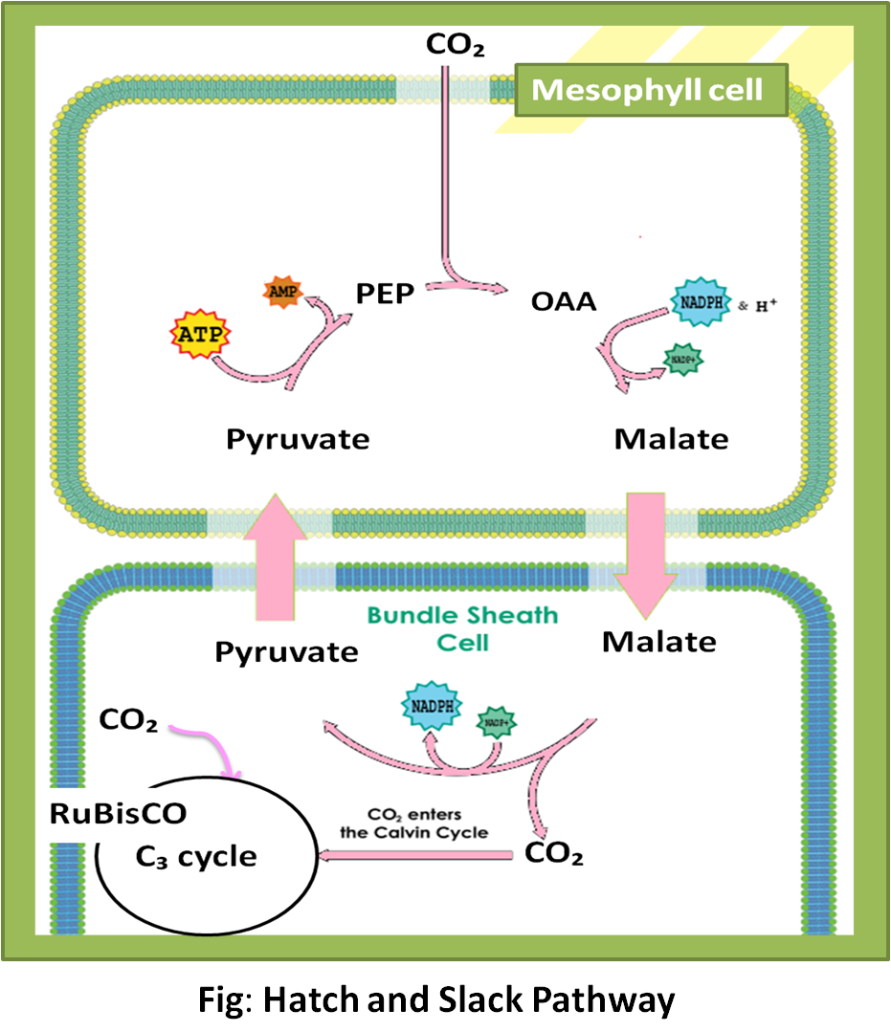Question
Question: Which is the primary \(CO_{2}\) acceptor for the \(C_{3}\) plant and \(C_{4}\) plant....
Which is the primary CO2 acceptor for the C3 plant and C4 plant.
Solution
Plants, which do not have the adaptation to combat photorespiration (a wasteful process), such plants are known as C3 plants. C4 plants can efficiently combat photorespiration and can fix (assimilate or take in) the carbon dioxide more efficiently than C3 plants.
Complete answer:
The primary CO2 acceptor of C3 and C4 plants is RuBP (Ribulose 1-5-bisphosphate) and PEP (Phosphoenolpyruvate), respectively.
C3 cycle or Calvin cycle: In the Calvin cycle, the carbon dioxide acceptor molecule is RuBP and the enzyme catalyzing this reaction is RuBP carboxylase. In this process, the reduction of carbon dioxide gives the first stable product, a three-carbon compound, which is 3-phosphoglyceric acid or 3PGA. The plant which follows the C4 pathway is called C3 plants.
First reaction of C3 cycle:
6Ribulose−1−5−bisphosphate(RuBP)+6CO2+6H2O→12×3−Phosphoglycericacid(3PGA)

Figure: Complete the C3 cycle.
C4 cycle (Hatch and Slack Pathway): The primary acceptor of the carbon dioxide molecule is the PEP (phosphoenolpyruvic acid) which is present in the chloroplast of the mesophyll cells. The first stable compound produced in the oxaloacetic acid, in the presence of enzyme PEP carboxylase. Since oxaloacetic acid is the first stable 4-carbon compound, it is named as a C4 cycle.
The first reaction of the C4 cycle:
PEP+CO2+H2O→Oxalo−aceticacid+H3PO4

Additional Information:
Photorespiration: It is a reverse process as compared to photosynthesis. It involves the uptake of O2 and the release of CO2 in light and results from the biosynthesis of glycolate in the chloroplast. After which, the glycolate acid is metabolized in the same leaf cell. Peroxisomes are the cellular site for photorespiration.
Photorespiration is a wasteful process because no energy-rich compound is produced and loss of carbon takes place during such a process. This process has a significant impact on C3 plants but in C4 plants such a process is insignificant.
Note:
- The leaves of C3 plants do not show kranz anatomy (where the mesophyll cells are clustered around the bundle sheath cells in a ring-like structure). C3 plants exhibit dark reactions where they utilize the products of the light reaction and do not require sunlight. 95% of plants on earth are C3 type.
- The leaves of C4 plants possess kranz anatomy, and the chloroplasts of these plants are dimorphic. About 5% of plants on earth are C4 type.
